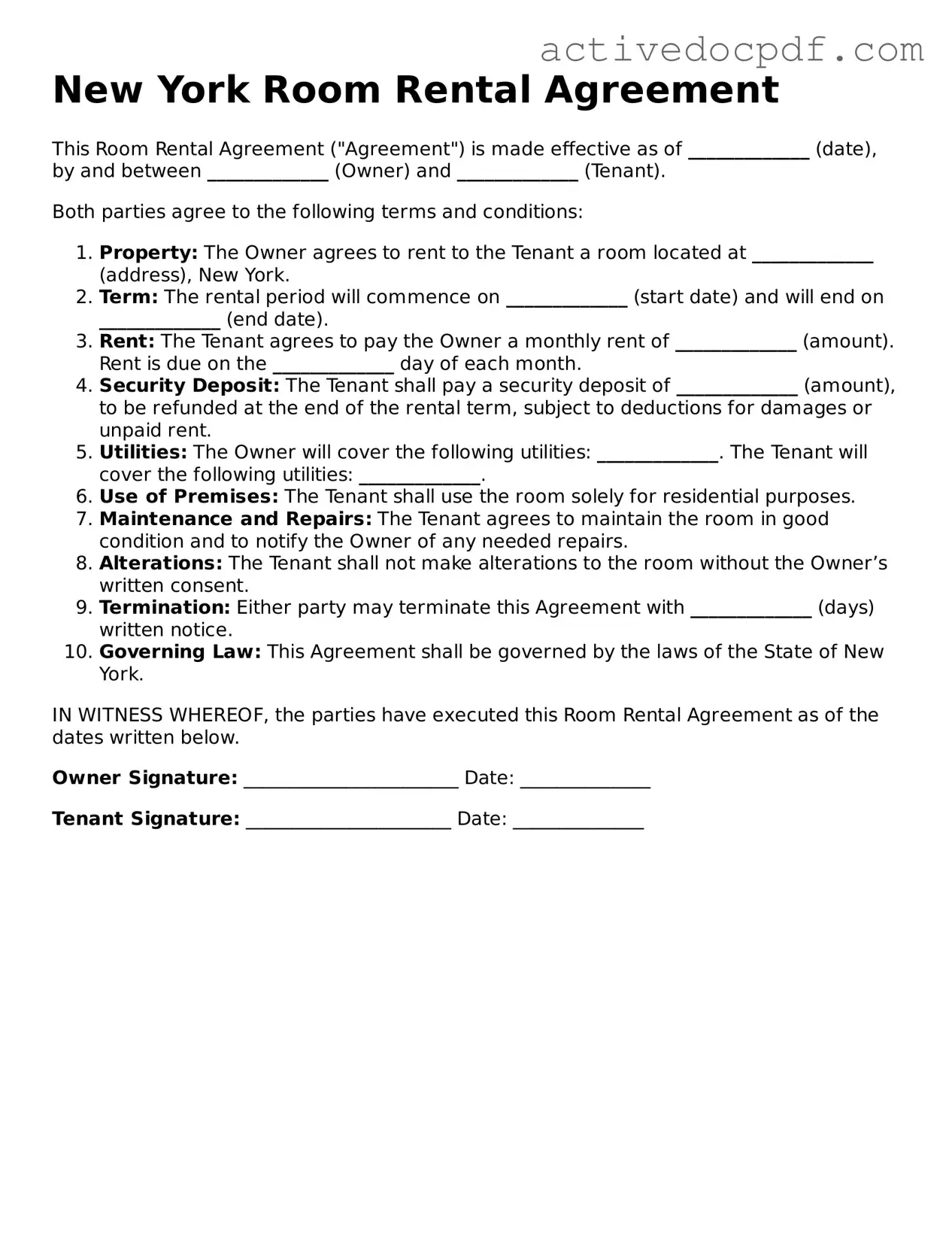What is a New York Room Rental Agreement?
A New York Room Rental Agreement is a legal document that outlines the terms and conditions under which a room is rented from a landlord or property owner. This agreement serves to protect both the landlord's and tenant's rights by clearly defining the responsibilities of each party. It typically includes details such as the rental amount, duration of the lease, security deposit, and any rules regarding the use of shared spaces.
What should be included in the Room Rental Agreement?
When creating a Room Rental Agreement in New York, several key elements should be included to ensure clarity and legal compliance:
-
Names of the Parties:
Clearly state the names of the landlord and tenant.
-
Property Address:
Include the complete address of the rental property.
-
Rental Terms:
Specify the monthly rent amount, payment due date, and acceptable payment methods.
-
Duration of Agreement:
Indicate whether the rental is for a fixed term or month-to-month.
-
Security Deposit:
Outline the amount of the security deposit and conditions for its return.
-
Rules and Regulations:
Detail any house rules, such as noise restrictions or guest policies.
How is the security deposit handled?
In New York, landlords are allowed to collect a security deposit, typically equivalent to one month's rent. The landlord must hold this deposit in a separate account and return it to the tenant within 14 days after the lease ends, minus any deductions for damages or unpaid rent. It is advisable for tenants to document the condition of the room upon move-in to avoid disputes over the security deposit when moving out.
Can a Room Rental Agreement be terminated early?
Yes, a Room Rental Agreement can be terminated early, but the process depends on the terms outlined in the agreement. Generally, tenants must provide written notice to the landlord, adhering to the notice period specified in the agreement. If the agreement is month-to-month, a 30-day notice is typically required. It is important to review the specific terms of the agreement to understand any penalties or conditions associated with early termination.
What happens if the tenant violates the agreement?
If a tenant violates the terms of the Room Rental Agreement, the landlord has several options. Common violations may include failure to pay rent, unauthorized guests, or damage to the property. The landlord may issue a notice to the tenant, outlining the violation and providing a timeframe for correction. If the issue is not resolved, the landlord may initiate eviction proceedings. It is essential for both parties to understand their rights and responsibilities to avoid legal complications.
Is it necessary to have a written Room Rental Agreement?
While verbal agreements can be legally binding, having a written Room Rental Agreement is highly recommended. A written document provides clear evidence of the terms agreed upon and helps prevent misunderstandings. It serves as a reference point for both parties and can be crucial in resolving disputes. In New York, having a written agreement is not only beneficial but also serves to protect the rights of both the landlord and the tenant.
